Historical Studies By/With Verbs: Origins of Powers
Activity Report
30 MAR 2022 Eighth workshop held offline
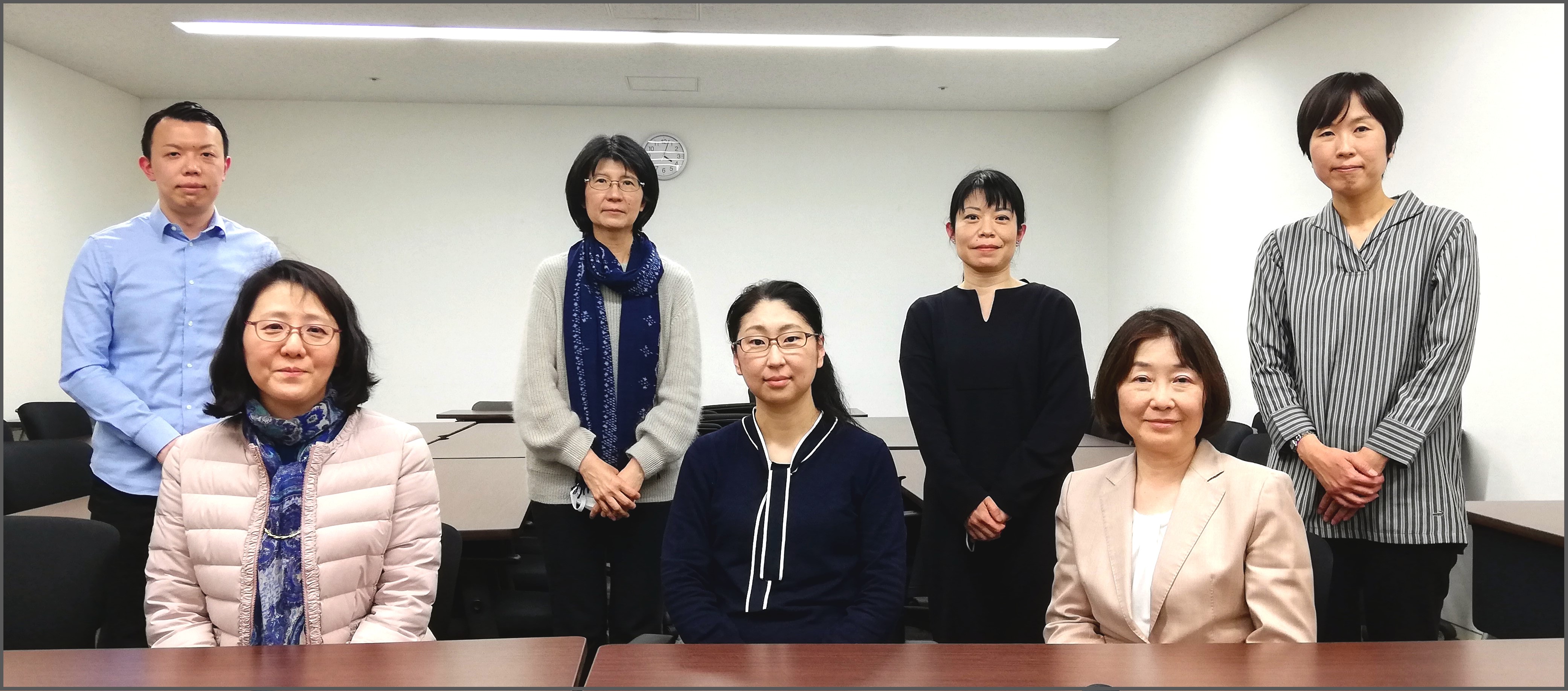
(Participant’s note)
On 30 March 2022, the last meeting of this project took place at the Historiographical Institute, the University of Tokyo. This time, Eguchi played the role of the facilitator. She asked each member how they understood the purpose and methodology of the project and the current situation of historical studies, referring to the discussions in previous meetings. Three hours (five hours in total if the 'chat' afterwards is included) passed quickly and a variety of interesting questions emerged from the exchange, each of which could have been examined further. To cite just one example, the members discussed in detail how they understood and used the words ‘kenryoku (power)’ and ‘minshū (the people/subaltern)’, and noted different meanings they attached to them. They also considered how these words had been used in various contexts, based on examples from different periods and regions. The issues related to 'translation' were also discussed. As in previous meetings, this meeting helped the members understand a variety of ideas on how to study and narrate history.
Lastly, I would like to take this opportunity to thank Matsukata, the organizer, and the other members, for creating this stimulating project. Due to the pandemic, it has been difficult to continue active academic interaction for the past two years, and yet this project provided us with the opportunities to meet scholars working on different periods and regions and exchange ideas with each other freely. I hope we can continue our dialogue even after the project itself is over.
(Organizer’s note)
At the discussion of the abovementioned workshop, there were many other possibilities suggested as translation of “minshū,” such as “masses,” “subjects,” “labors” and “working class.” Also suggested that “minshū-shi” could be translated into “history from below.”
Let me comment a little bit further on the word “minshū.” I suppose the word minshū was originally a translation of an European word such as “the people” because minshū is a collective noun just like “people” is. According to the Shogakukan Unabridged Dictionary of the Japanese Language (online version in Japan Knowledge), the meaning of minshū is “the mass of a nation or society often referred to as the ruled class, (The original Japanese is: 「国家や社会を構成している多くの人々。多く、被支配階級としての一般大衆をさしていう。」).” This definition suggests that the Japanese word is a modern word and could be translated into “masses” or “ruled class.” the first appearance of the word is Chōmin Nakae’s Kokkai-ron in 1888. That suggests the original word could be French (le peuple or les gens), not English.
Regardless of what the original language is, the Japanese word minshū have been used in various ways in our historical research. We could be able to translate it into English not only as “the people” or “subaltern” but also as “masses,” “subjects,” “labors,” or “working class.” Minshū-shi (the history of minshū) might be able to translate into “history from below.” There is not a common understanding of what or who minshū are. It will be difficult bridge between minshū in medieval Japan and that in the twentieth century India. (If minshū is the “nation” minus “elite,” how can we define minshū before the nation emerged? If minshū is a name of a class, can it be applied even before classes were established?) That is why I proposed to use a verb as a key concept.
When I talked about this project to some persons who are not members, they said to me “Oh! That could be democratization of historical studies,” or “Oh! That will be a history from below!” Within the last session, however, I heard comments that “Historical Studies By/With Verbs” could be contradictory with minshū-shi. Much more time will be necessary to overcome this kind of differences, but that was unfortunately the end of the project. I would like to thank all the members for joining the discussion.
29 NOV 2021 Seventh workshop held offline
On November 29, 2021, we held the seventh workshop face-to-face at the Hongo campus. At previous workshops, each participant proposed a topic for discussion. However, at the seventh workshop, Akiko Mieda gave a one-hour presentation entitled "From a Perspective of Regional (or Ethnographic) History". In response to the question raised in the previous workshop, “whose history do we speak about?” Mieda made this presentation based on her own experience.
At the first university where she worked, she was involved in the establishment of a course on the study of Kyoto. This course was intended to provide students with an opportunity to learn about Kyoto, which is a historical city and tourist destination, in a multidisciplinary manner beyond the framework of literature, geography and history. However, after she actually began to teach in the course, she faced a range of problems. Although mainly designed to build a community-based discipline involving Kyoto and its inhabitants, the program was initiated, not as much on the basis of academic necessity, as of various administrative considerations. This eventually produced undesirable consequences. Also, the new course was not immediately accepted by local people, and few organizations and groups were willing to accept course students as interns, as their fields of specialty were not very clear to them.
Mieda has been conducting research into Nishinokyo in Kyoto, which used to be in the domain of the Kitano Tenmangu Shrine. People living in the area called “ho” engaged in Shinto rituals and in the production and sale of malt necessary for Japanese sake brewing. They were called “jinin (people of the deities).” Even now, globe amaranths are cultivated locally to be used in the production of portable shrines, and the Nishinokyo Zuiki Mikoshi preservation group is conducting activities. Although there were many farmers in the area, due to rapid urbanization in and after the 1960s, the farming population has continued to decrease. Moreover in 2018, one of the oldest Kyo-machiya (traditional Japanese townhouses) built in the area was disassembled. In her research activities, Mieda has thus been facing the issue of how to communicate the regional history in the face of such changes.
At the workshop, Mieda introduced the issues she is working on, based on her experience at the university and on her own research activities conducted in and after 2003. Other participants raised various questions, including the following: while it is necessary to look into the history of a community as opposed to being limited to the history of each individual, don’t you think that collectively calling individuals “people” might result in thinking light of the existence of each individual? I think this opinion points to the difficulty of answering the question, “Whose history do we speak about?” The following opinion was also shared in the workshop: looking into the history of a specific region leads to also looking into the history of the region’s relations with other regions, and that could develop into a global research activity. The presentation made by Mieda thus provided us with an opportunity to share specific information and also to gain insight into the fundamental theme of the research project.
5 OCT 2021 Sixth workshop held offline
As the COVID-19 situation stabilized in Tokyo, we held a face-to-face workshop. At the previous meeting, several members touched upon the following point: although three parts of the seminar (the overall picture, three presentations, and discussion with the floor) were each good, the three were not sufficiently coherent. We decided to examine the project further and explore common ground for the members.
First, Inada and Mieda made their observations on the current project. Then, Nagai explained her idea of examining the “speeches” made by Hojo Masako, which will be the topic of her next study.
In the discussion, the members expressed the following opinions: “Shall we try to find common features beyond time and space by examining verbs as a key theme?” “How can we address the issue of diversity?” “Although we focused on speeches in July, there are an unlimited number of verbs. How can we reach a new history by this method?”
The following questions are more fundamental. “Why is it necessary to take a new approach to speeches when we think about a new history?” “How should we interpret the present moment?” “Should we speak by history, not about history?”
The discussion was lively, but we have not reached a consensus. We will continue discussing the same theme at the next workshop.
30 AUG 2021 Fifth workshop held online
We reviewed the results of the 38th open seminar held in July in the breakout session, in which writer Eri Eguchi participated. We discussed not only the results but also “how to provide an opportunity for discussions going forward.”
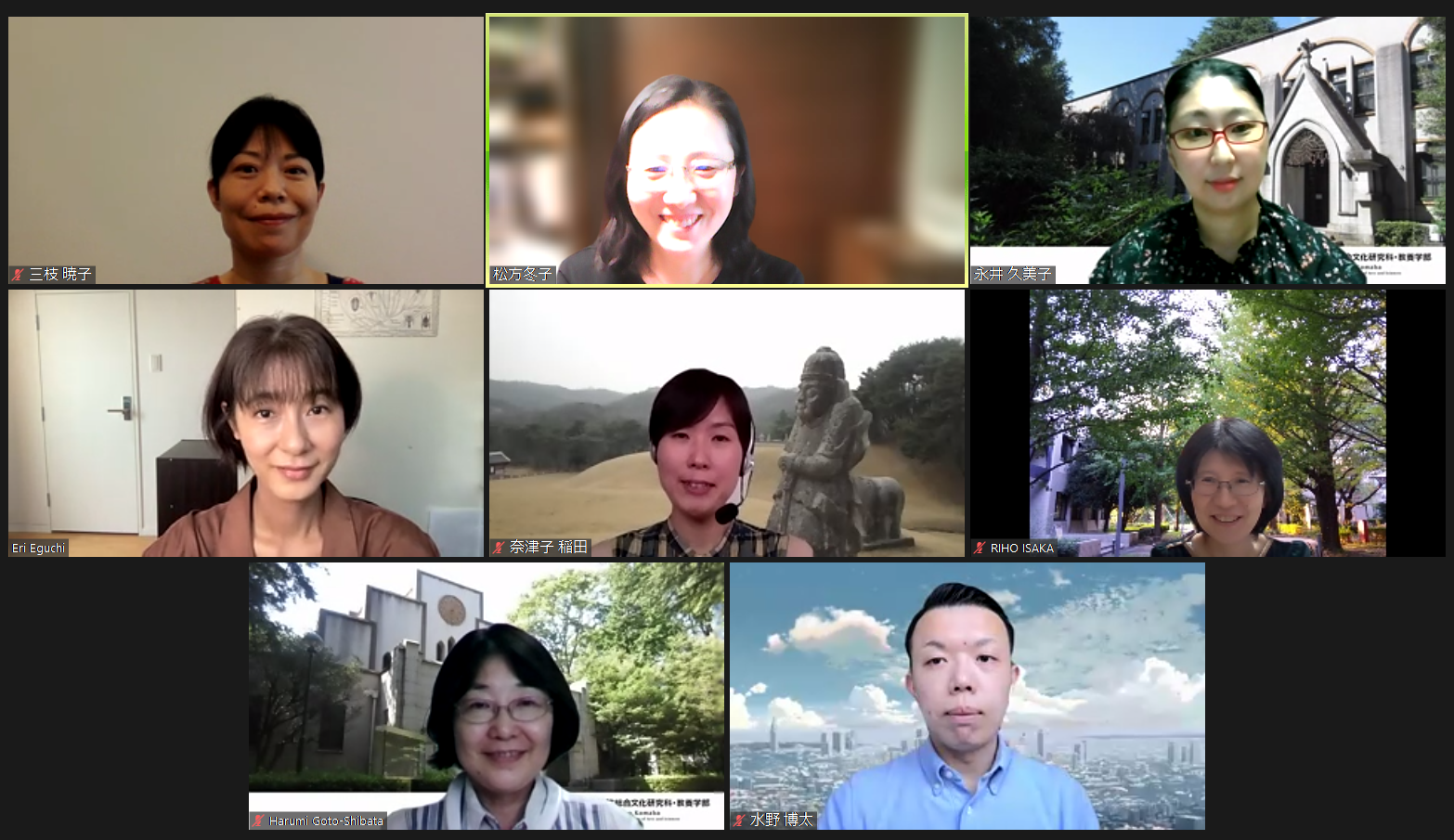
On July 9, 2021, we held The University of Tokyo’s 38th HMC Open Seminar on the theme, “Does the Power of Speaking Create Power? Questions from a Historical Perspective.”
At this event, Fuyuko Matsuakta, Hirota Mizuno, Harumi Goto-Shibata and Riho Isaka made presentations. A total of 197 people registered for the event, and 109 people participated in it. We would like to thank for those who participated.
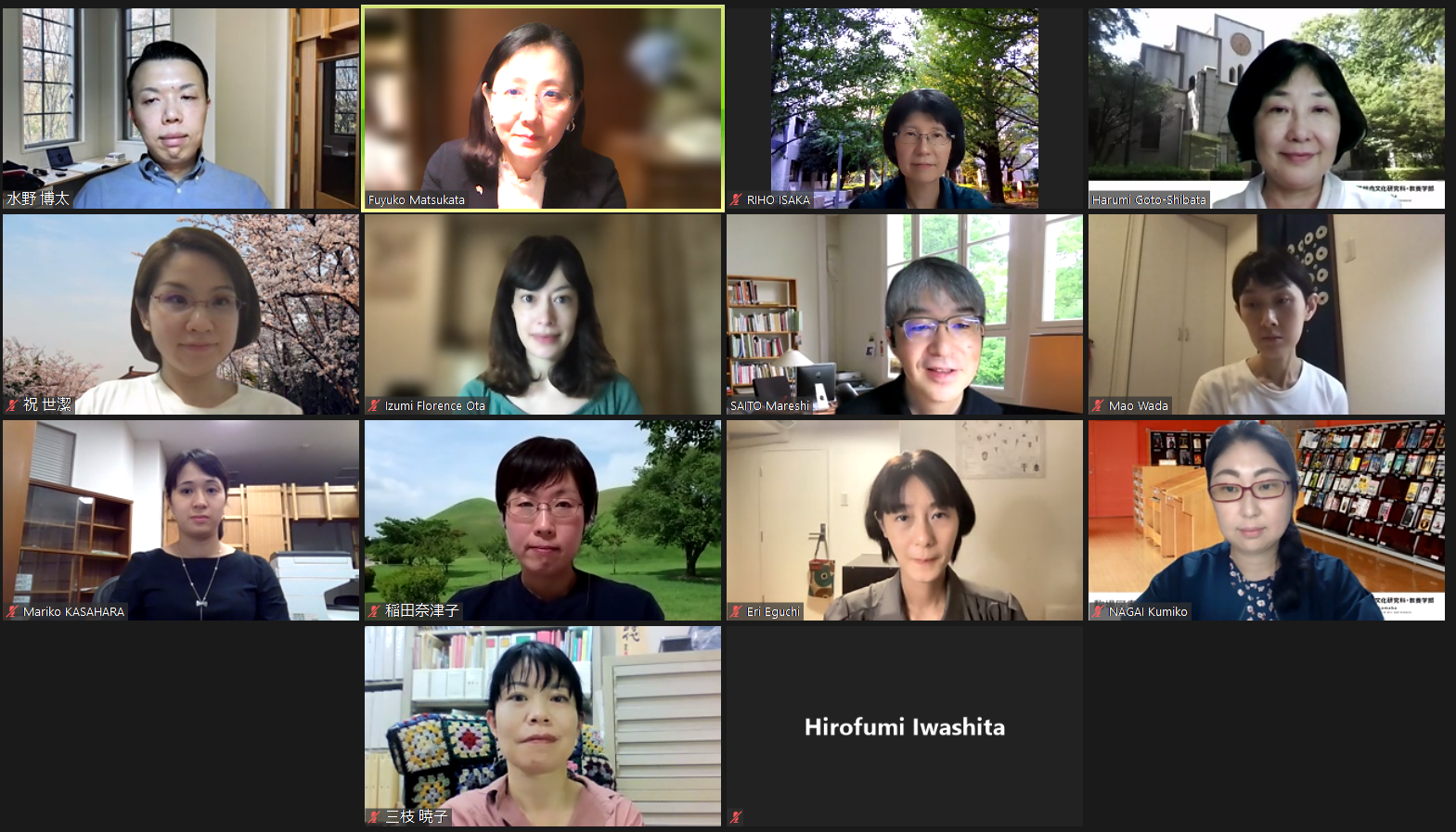
(Participant’s note)
The first year of our research project will end soon, and today, four members made presentations on the themes related to the project at the HMC Open Seminar (held online). Presumably due to the relevance of the topic (“Power of Speaking” and “Power”) to the current social and political situation, nearly 200 people registered for the seminar.
First, as the organizer of the research project, Fuyuko Matsukata the purpose of the project, sharing the idea that it is significant beyond the framework of academic studies to conduct research with a focus on verbs as the first step in a new approach to the studies of history beyond time and space. Participants were also briefed on the need to set universal standards to evaluate the “Power of Speaking” of today’s Japanese politicians. This is to be done by referring to relevant cases from various periods and regions, based on the recognition that the nature of a state can be defined by how authorities—including economic, military, religious and academic—are combined or supplemented with one another.
Subsequently, Hirota Mizuno reported on the speeches made in Japan in the 19th century. According to Mizuno, the Japanese word enzetsu was coined by Yukichi Fukuzawa as a translation of the English word, “speech.” Fukuzawa, who learned about the Western culture at the beginning of the Meiji period, valued speeches as a means for people to gather, discuss and make decisions to lead society, and attributed importance also to the styles of speeches. However, some criticized Fukuzawa’s ideas about speeches, insisting that enzetsu were the new forms of rakugo and kodan, which are traditional forms of Japanese verbal entertainment. Also, the Japanese practice of nemawashi (consensus building through one-on-one discussion) could make public speeches useless, and ultimately, the practice of making speeches did not take root among Japanese people.
Next, Harumi Goto-Shibata talked about the speeches made by Winston Churchill, who became the British prime minister in 1940, and introduced the features of his speeches. Churchill made a speech at the parliament in June 1940, immediately after becoming the prime minister, and his speeches during World War II are widely known. In them, he mentioned the worst cases to help people understand the situation more clearly and make them think, “That’s just what I wanted to know!” His speeches met the expectations of the people and won their trust. Queen Elizabeth II also made speeches that met the expectations of the people. In April 2020, the queen made a speech in the face of the COVID-19 crisis. Churchill and the queen thus made powerful speeches about fighting against enemies whose nature changed over time.
Finally, Riho Isaka analyzed speeches of Gandhi, who is famous for his nonviolent civil disobedience movements in the first half of the 20th century. Gandhi spoke about a wide spectrum of themes, and the voluminous collections of his speeches have been published in English, Hindi, and Gujarati. For Gandhi, there was no border between private and public domains. He searched for truth in all aspects of his life and talked about the process. He communicated his ideas also through his actions (for example by spinning yarn). He valued dialogues and searched for words that could be easily understood by many people. Isaka pointed out the need to also pay attention to the roles of people who had written down his speeches and communicated them in various forms.
Following these presentations, participants gave their opinions by using the “chat” and “sli.do” functions for discussion. They raised a range of questions, including a request for supplementary explanations about the purpose of the research project and about the details of the specific cases discussed in presentations, as well as a question about the limit of the “Power of Speaking” and the evaluation of the “ability to be silent” in contrast to the ability to make speeches. Unfortunately, I cannot introduce all the questions here. I was quite impressed with the ways in which many of the questions and opinions were related to what is going on in Japan and the world at present, including those about speeches made by female leaders during the pandemic, populism and Trump’s speeches.
During the event, as one of the participants, I continued to think about the “Power of Speaking” in Japan in the 14th to 16th centuries, the period of my research. Listening to Mizuno’s report, in which he referred to the formation of the groups to which Fukuzawa had attributed importance, I thought about the gatherings of people at temples and riots in villages as well as about a desirable decision-making process. I am now concerned about how to address the issue of speeches made in a period for which there remain no sound materials, and the types of available historical materials are also limited. When a participant asked, “What is the difference between the speeches of Trump and those made by Churchill and Queen Elisabeth II?” Matsukata answered that Trump’s speeches were designed for exclusion and the latter two’s speeches were designed for inclusion. This answer was quite inspiring, and I strongly felt the need to pay more attention to the power of “inclusive speeches.”
1 JUN 2021 Fourth workshop held for the first time offline
Writer Eri Eguchi was invited to this event, and participants made preparations for the open seminar slated to be held on July 9.
(Participant’s note)
The fourth workshop was the first held in a face-to-face format. In advance of the open seminar to be held in July with a focus on the verb “speak,” participants discussed the meaning of the word. They confirmed that a variety of speeches were made in different ages and regions targeting different people and for different purposes. Great speeches can be remembered by society, may be made in the form of performance, can be made via recorded media, and can be made into literature like those by biwa-playing minstrels. Also, some members expressed their view that Japan is generally considered as a region where silence is valued and even to “be silent” and “wait” could be regarded as positive actions. This opinion was quite new to me.
Participants discussed differences between speeches made by today’s Japanese politicians and those made by their counterparts in Western countries, and also talked about the culture and society of the United Kingdom, India and the United States in relation to speeches and based on their own experiences.
Matsukata, as the organizer of the event, talked about the purpose of the project once again. She said she felt a widening gap about universal discussions on global history while conducting research into Japanese history in an ultimately demonstrative manner, and she would like to narrow the gap and deal with the issue of universality by connecting with other active researchers beyond her fields of specialization. I tend to think within the framework of East Asia in my research activities and agree with the importance of promoting universal research that is not focused only on Western countries. However, I felt a difference of opinion regarding the comment about the gap between desirable universality and the Western way of thinking. I would like to continue my research while participating in discussions with other researchers.
16 MAR 2021 3rd online workshop held with Ms. Eri Eguchi (writer) as a guest
Ms. Mariko Kasahara, the successor of retired Mr. Tomoki Kawamura from HMC, and Ms. Florence Izumi Ota, the new special researcher in HMC (Liaison), also participated.
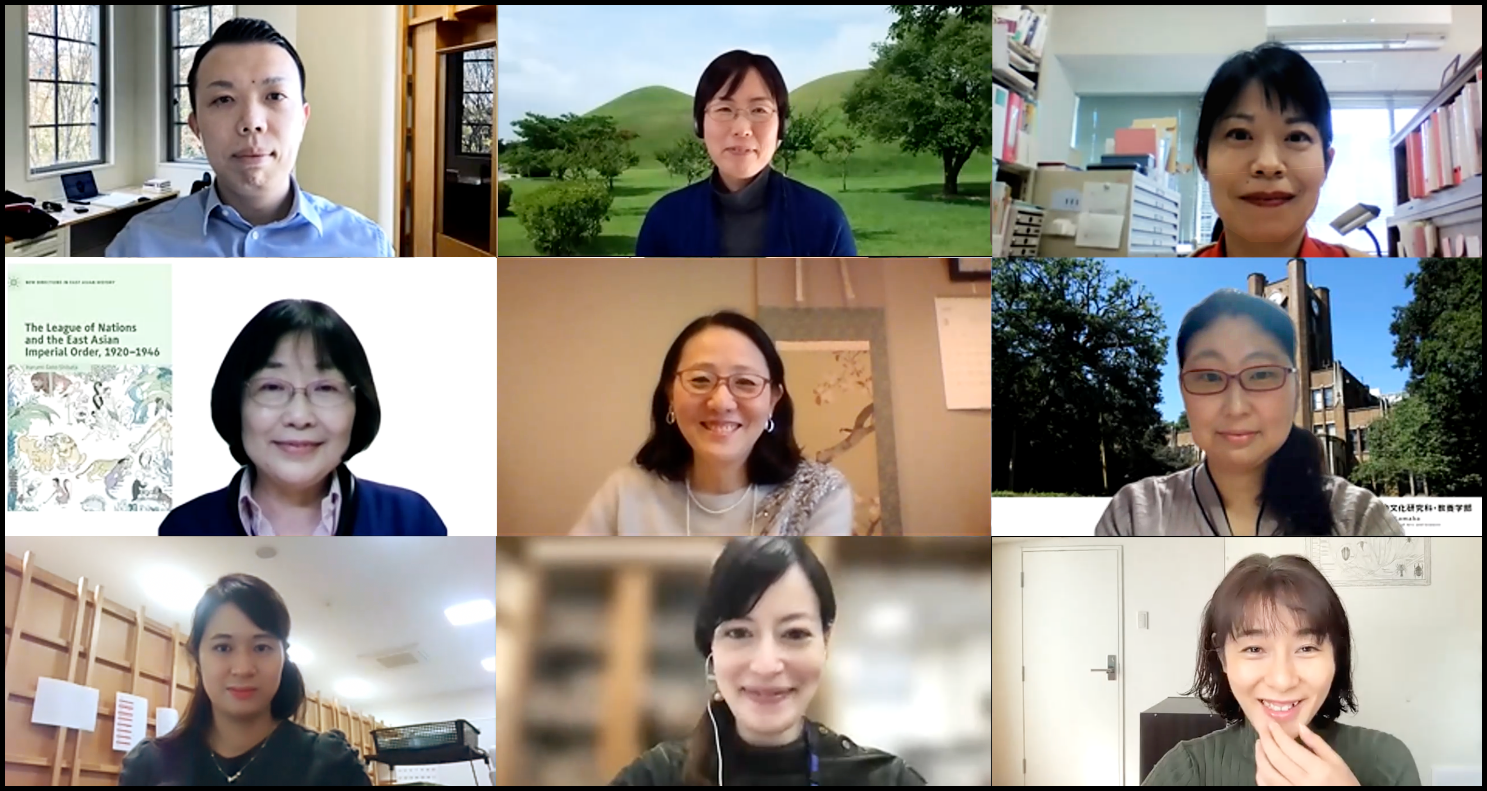
Members gave presentations for the open seminar, the culmination of this academic year. These presentations are about “Teller”, “Researcher” or “Singer”.
(Participant’s note)
Ms. Fuyuko Matsukata, the lead of the project provided an article “Summarising” this research project prior to the session as preparation for the open seminar that marks the end of this academic year. Each attendee had read this article and the 6 members (Ms. Riho Isaka, Ms. Natsuko Inada, Ms. Harumi Goto, Ms. Kumiko Nagai, Ms. Akiko Saegusa, Mr. Hirota Mizuno) each did a presentation based on one key verb with visual material.
The speciality of the participants varied time wise from ancient/medieval to modern/post-modern, and the subject regions included Japan, India, Britain, etc., which made the presentations unpredictable and very exciting.
This combination of topics probably never gets to be discussed at the same time when classified by regions, time or categories like history of economy or politics.
There were talks about how today’s gender views affect our thoughts on ancient Japan, for example that a female chieftain was considered as a shaman.
There were also talks about the spokesperson who represented Gandhi or the message from the British government, “Keep Calm and Carry On” influencing our attitude of “keep learning (no matter what happens)” in history.
After the presentation, we had a debate upon the suggestion that a clearer storyline was likely to generate conversation with the participants of the open seminar, and the workshop ended when we came up with the direction of focusing on the relations of “teller” and “power”. We have been polishing the storyline via mailing list.
6 OCT 2020 2nd workshop held online with Ms. Eri Eguchi (writer) as a guest again.
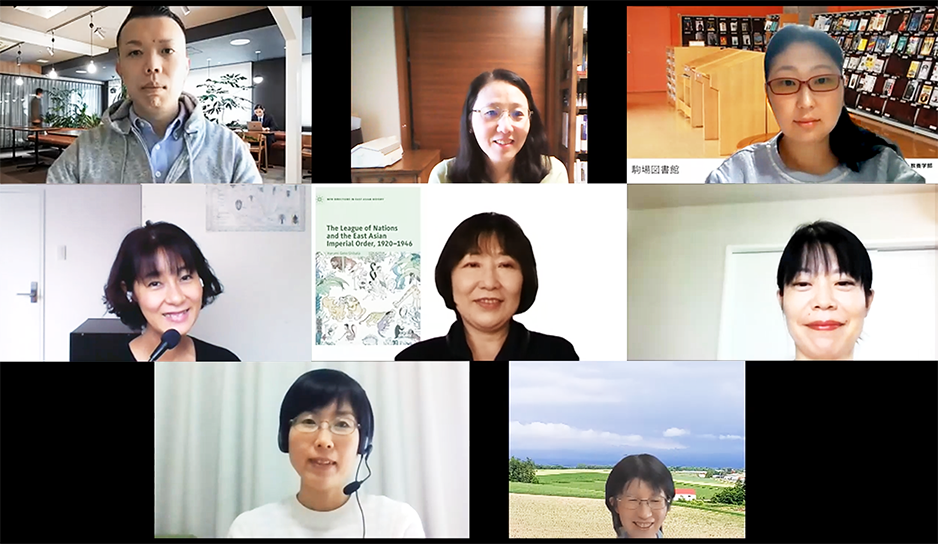
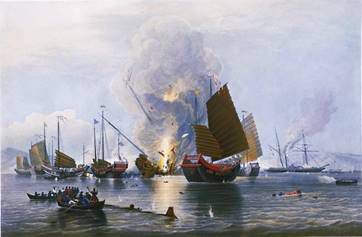
The 2nd workshop was held online as well. This workshop was based on images and visuals that were inspired by some of the key verbs we shared in the previous session and brought by each member. Our intention was to start a conversation with these images.
Perhaps it was an idea specific to online sessions where sharing images and accessing the internet is relatively easy.
When we set something that indicates power-related as key verbs, such as “to fight (military power)” “to trade (economic power)” and “to heal (religious power)”, more images brought to the session described people who “fight” or “heal”.
This led to the conversation that people who “trade” might have been unlikely to be visualised or perhaps they did not prefer to be visualised (to show off their wealth).
While the famous painting of the British Navy attacking Chinese junks in the First Opium War (Public Domain: Duncan, NEMESIS Destroying the Chinese War Junks) made us point out that ultimately the Power was largely dependent on the military power = “to fight”; on the other hand, the picture of foot soldiers looting (Shinnyodo Engi Emaki) which appears in Japanese history textbooks describes that in medieval Japan, people who “traded” or “farmed” also became people who “fought” in certain situations for economic reasons rather than pure military or power-oriented motivation. This emphasized the complexity of the act of “fighting”.
Needless to say, when we start a discussion based on images and visuals, critical analysis of the background and intention of drawing/creating is unavoidable.
When we try to recreate past events or figures, we naturally cannot escape from the value or constraints we have in the era we live in. From the examples below, we can say that it is remarkable, especially when recreated in forms of paintings or sculptures.
It has been pointed out that the restoration of images or dioramas of funeral rituals in ancient tombs in Korea/Japan unintentionally reflect the modern customs and common sense of each country without academic backup.
In modern paintings or manga of ancient Indian females, their outfits reflect the social norm of the era in which the artist is active and not from an accurate historical perspective.
28 AUG 2020 1st online workshop held. Presentation of “Historical Studies By/With Verbs: Origins of Powers” (Matsukata) and Q&A session with Ms. Eri Eguchi (writer) as a guest.
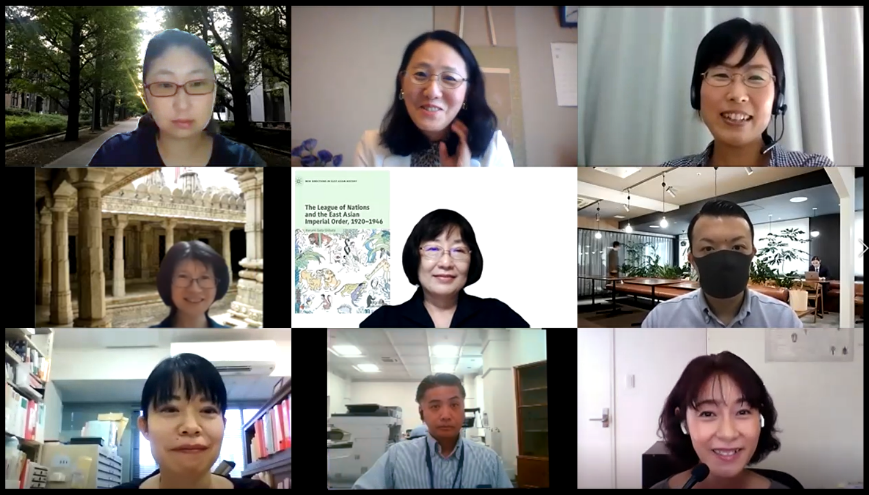
(Organiser’s note)
Our 1st gathering was held online due to the Covid-19 pandemic. I was worried because many of the participants did not know each other, but thanks to the cooperation of everyone, the session was lively and fun.
Despite my presentation being quite “Eccentric”, I was reassured when I received positive feedback such as “Setting Verbs as key points in visualising people on the move”, “There is an affinity with literature”, “Since ancient times, stories have always existed with pictures”.
I was surprised to receive frank feedback from professors of Humanities from the University of Tokyo, such as:
“The language is influenced by social status or social attributes. Since the social rank which created the literary material is limited, relativisation would be useful”
“To be honest, I have difficulty understanding the material translated from [a] language I do not speak even though I studied the contents”.
Although it is a tough age for the Humanities, adversity is the best school. I felt the “fluctuation” of Humanities in a positive sense. In the meantime, I try to find a way to communicate across the boundaries of research fields without setting specific goals.
(本ページの無断転載を禁止します。)











